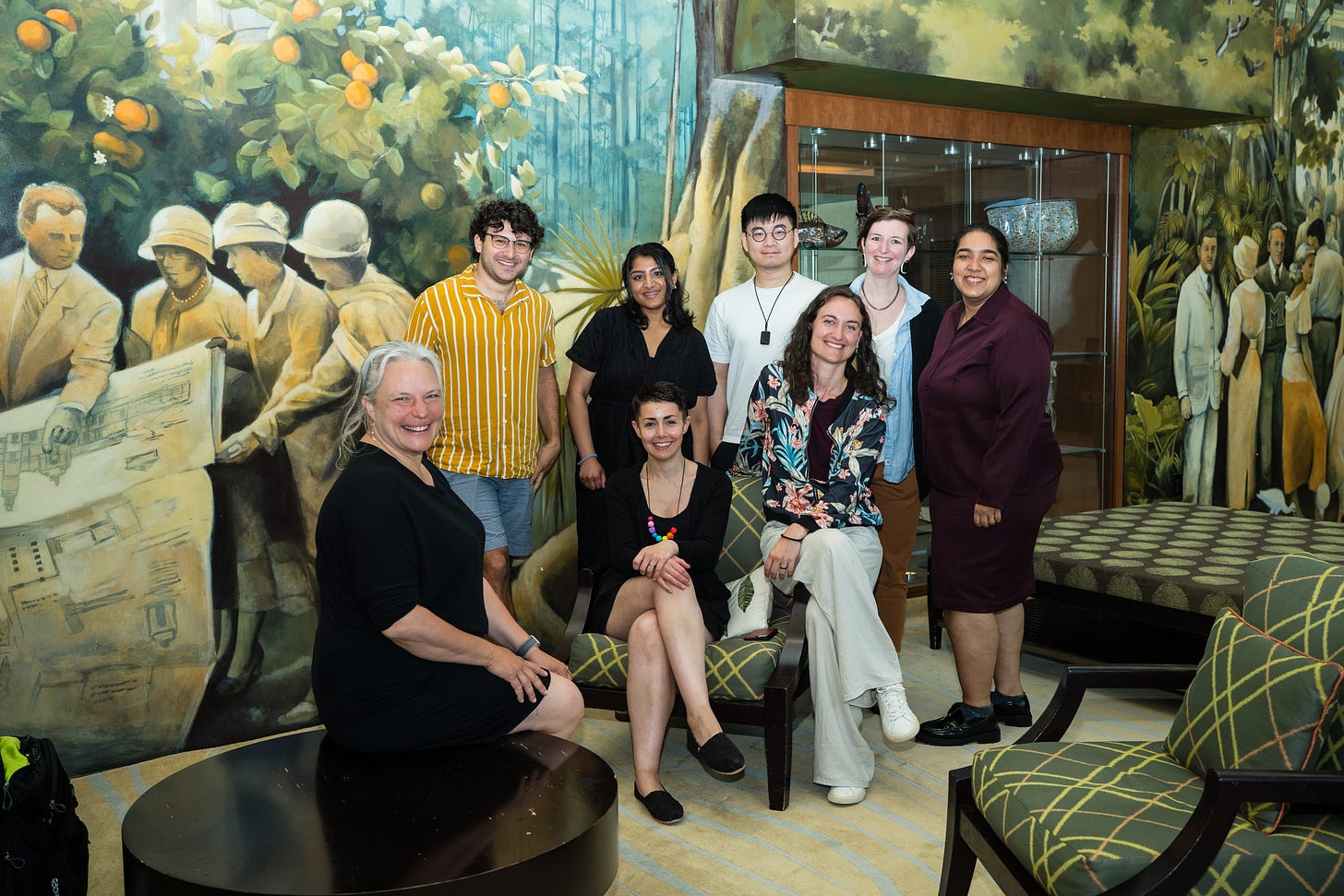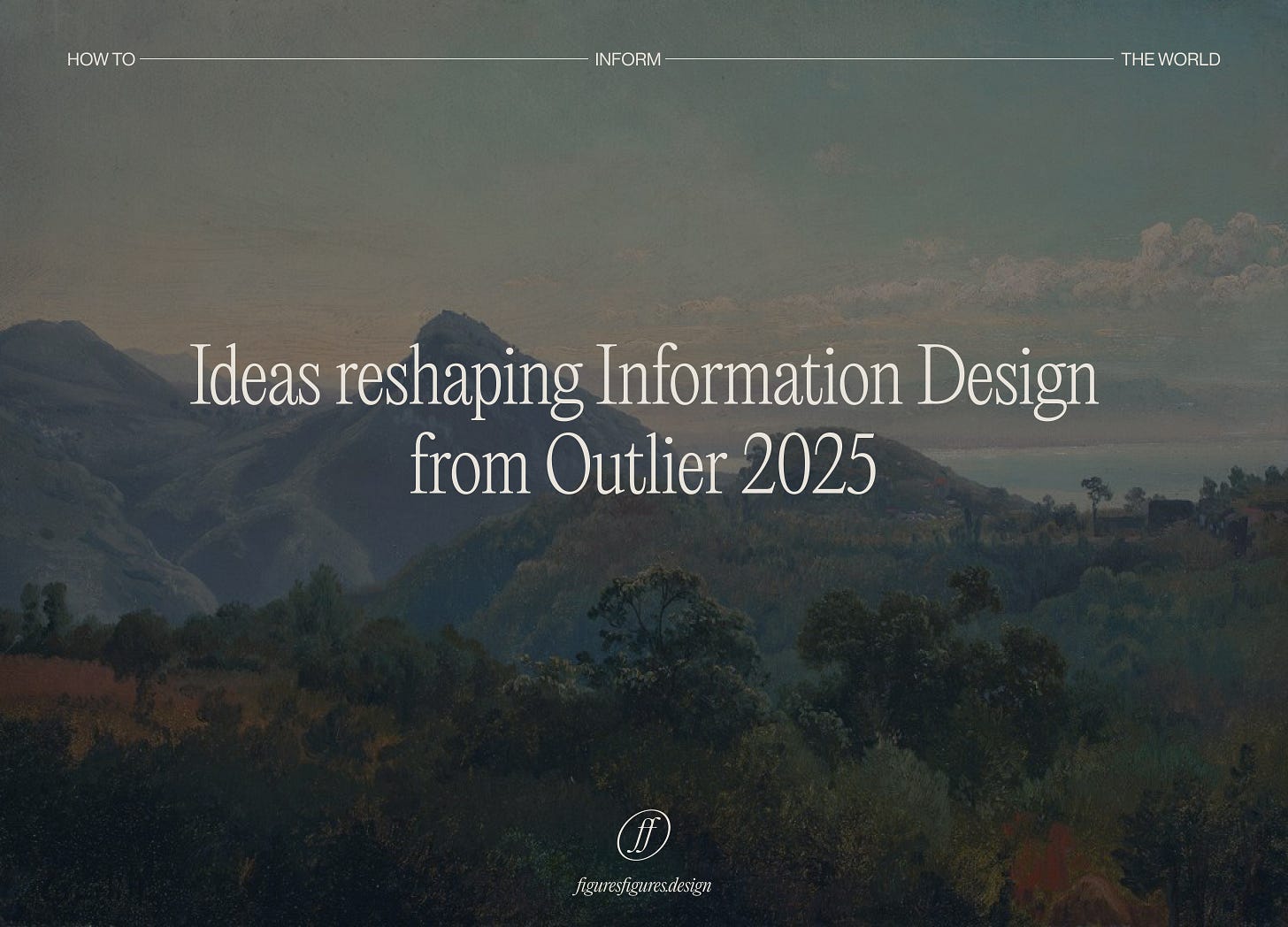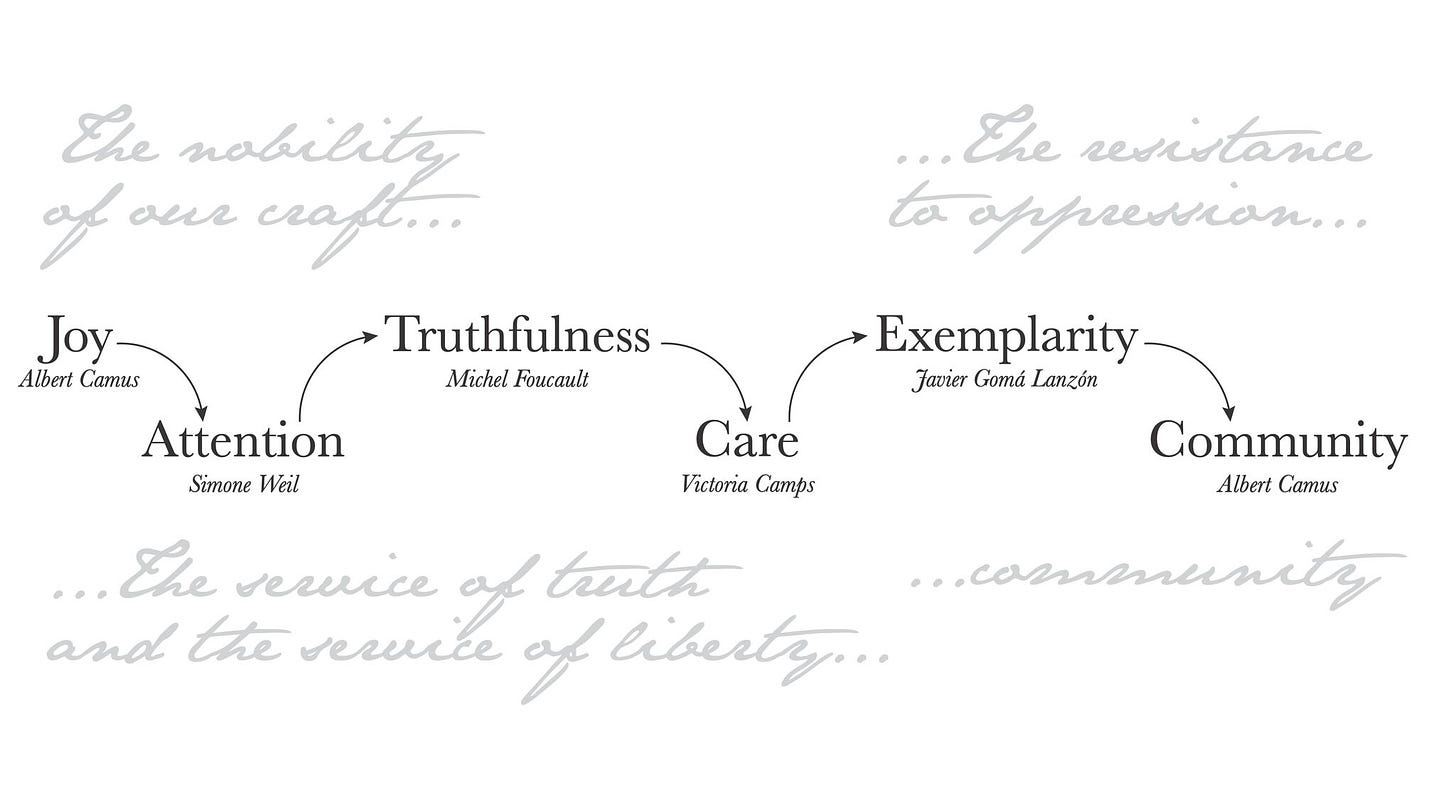Notes from Outlier: designing for real life and resistance
Our founder Gabby just got back from Outlier, the information design conference. Here’s what she’s bringing back to the studio.
Our founder Gabby just got back from Outlier, the information design conference. Here’s what she’s bringing back to the studio.
There were a lot of excellent talks. Here are the ones that stuck with me, and why.
Your data needs to works for real people in real context
There will be no surprised that one of my favorite talks was from Frank Elavsky.
He opened by trying to show a dashboard on his phone to a room of 300 people. No one could read it. Then he asked:
Why do we design data visualizations that only work in one perfect scenario?
Frank argued for what he calls "softerware": visualizations that work more like clay than concrete. Instead of shipping finished, fixed objects, we give people tools they can reshape to meet their personal needs.
But here's the most provocative part for me: most people have already told us what works for them. They've set their systems for dark mode, bigger fonts, motion reduction. And we routinely ignore all of that.
At Figures & Figures, we try to bake accessibility into our data visualization guidelines and systems, but Frank had a sharp reminder: what's helpful for one person can create barriers for another. Two people with the same vision condition might need completely opposite solutions.
Since there's no perfect design that works for everyone, how do we build information that people can adapt to their actual lives?
There was a lot of more to his talk, but the two things I take away for us is:
Respect the right to repair. Have your visualizations honor users' preset system preferences
Create personalizable tools with safe guardrails to prevent users from creating misleading datavizs (important when building templates, guidelines, data design systems or data products)
Information Design as Resistance
Alberto Cairo’s talk felt like a love letter to this field.
He called information design "an actual act of mutual aid", one that helps people understand their world well enough to improve it.
Alberto reminded all of us that every visualization choice is also a values choice. What we emphasize, how we frame comparisons, which complexities we preserve, all of that shapes how people understand the issue.
He shared his six values:
Joy: the spark you feel when creating or sharing insights that click
Attention: deep focus, but also letting yourself be filled by the world around you
Truthfulness: conveying your best understanding of reality, especially when it's contested
Care: empathy and compassion driving the work you choose to do
Exemplarity: learning from admirable work and becoming worth imitating yourself
Solidarity: recognizing we can't thrive alone; when we succeed, we help others rise
There was a profound sense of hope in Alberto's talk. One that I personally needed considering the current madness going in the U.S. administration these days and the amount of harm being done.
Three smaller highlights
Steve Wexler's reality check: Are we creating “molecular gastronomy” when a peanut butter & jelly would serve better? A good ego check, design for your actual audience, not the one you wish you had.
Moody's data visualization team taking home two awards made my day. We worked with them on their dataviz guidelines, and seeing that small team of three get recognized felt like proof that small teams can do exemplary work.
Our friends at Revisual Labs, led by Gurman Bathia, also took home a studio award. I've met with their team several times, and you can feel how much heart and intention they pour into everything they make. It is always awesome to see bold, independent studios outside the U.S. and Europe getting the recognition they deserve.

Honestly, one of the best parts was just being in a room with people again.
There’s nothing like grabbing a coffee Mexican mule with someone who’s obsessed with the same weird problems as you are!
P.S. I also gave my own talk at Outlier about how we're evolving from "chart-makers" into something much more strategic. If you're curious about the five roles I think we should play to evolve, you can read about it here on Substack or on Linkedin.


